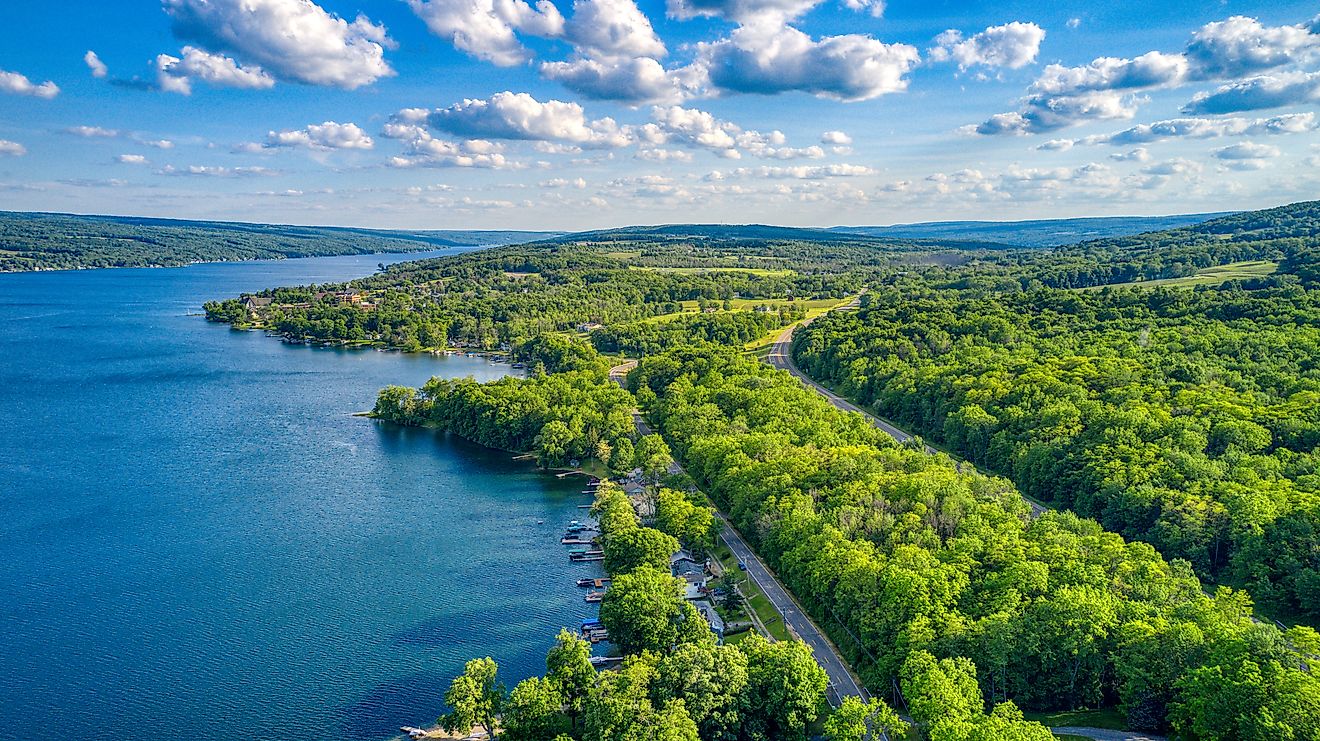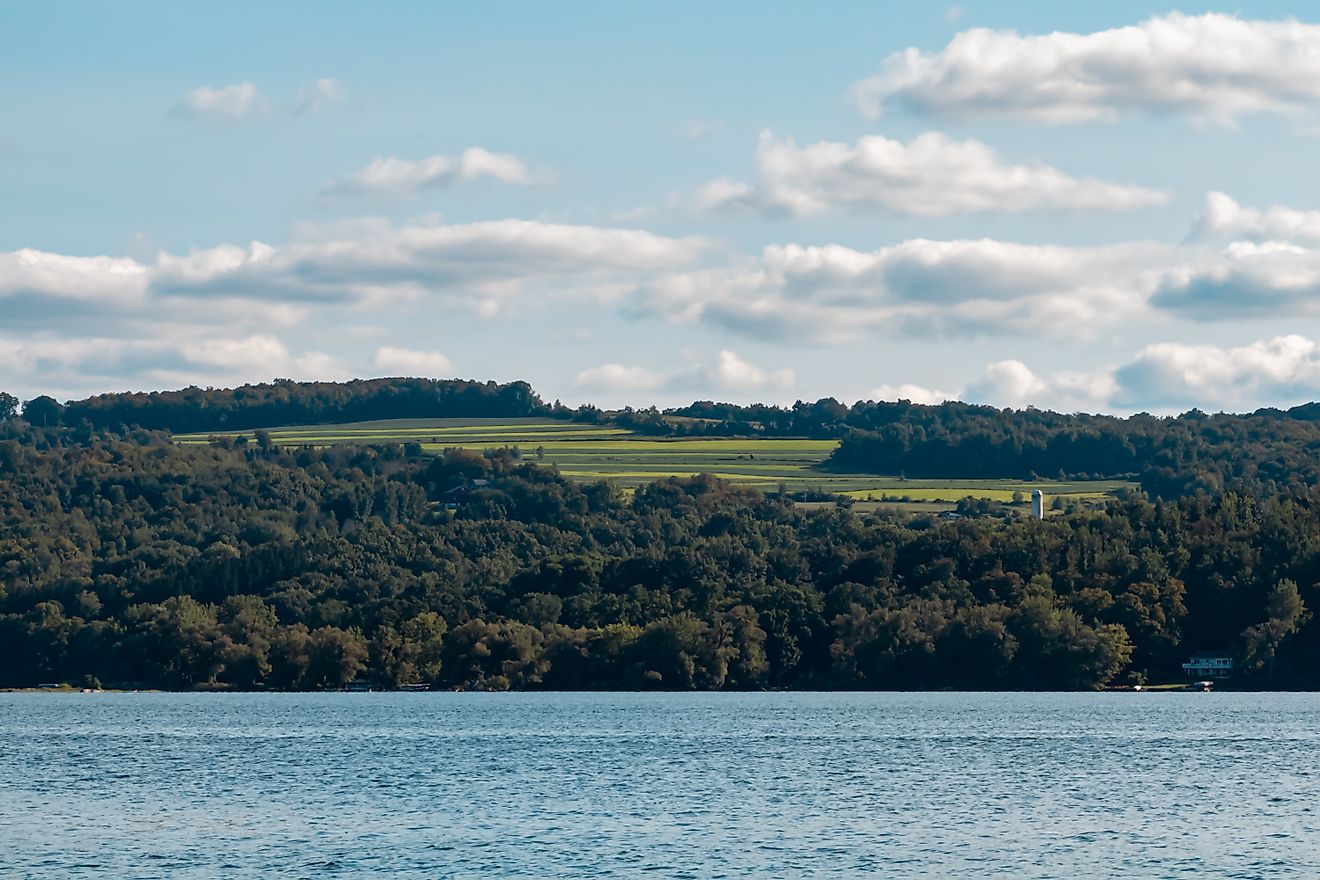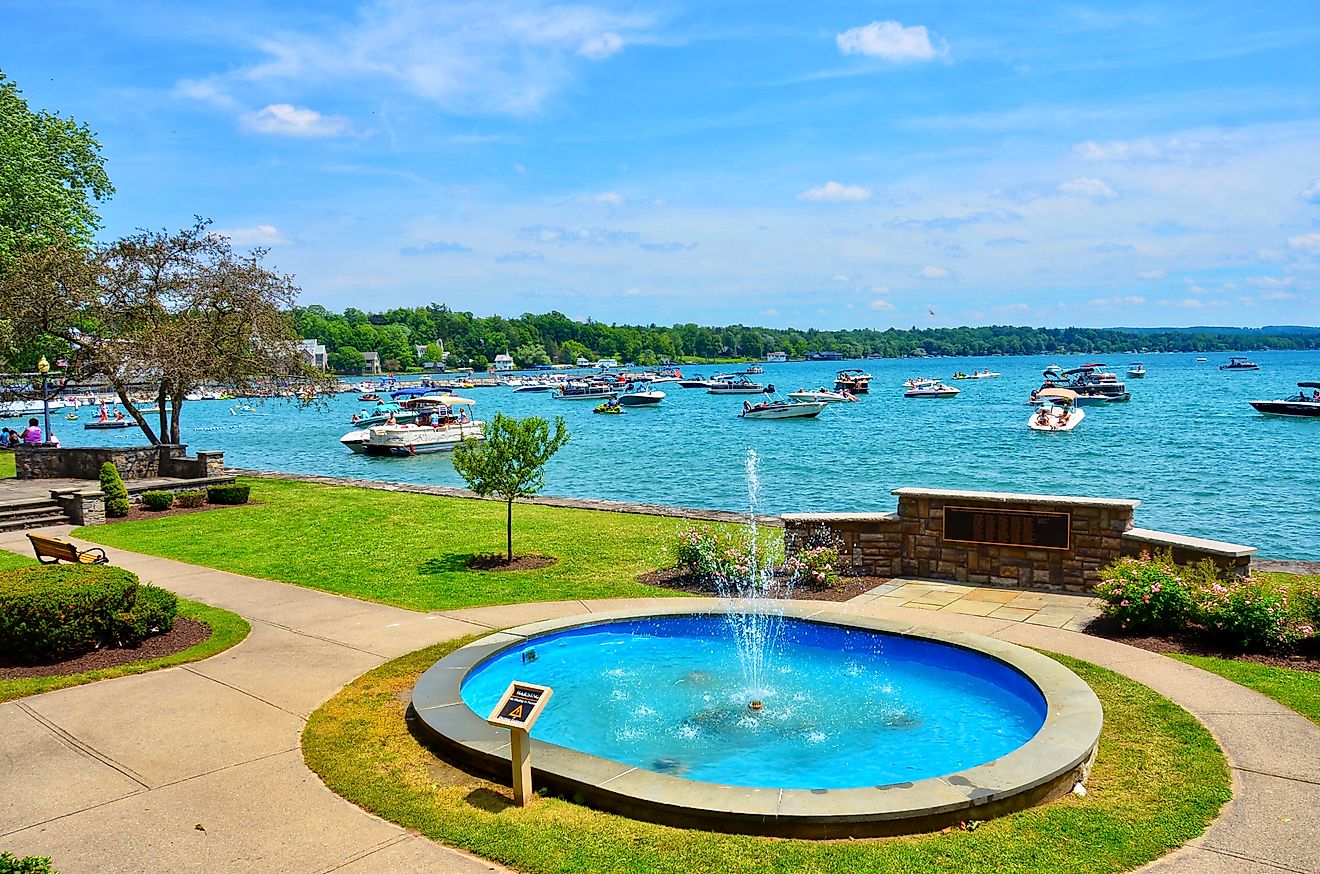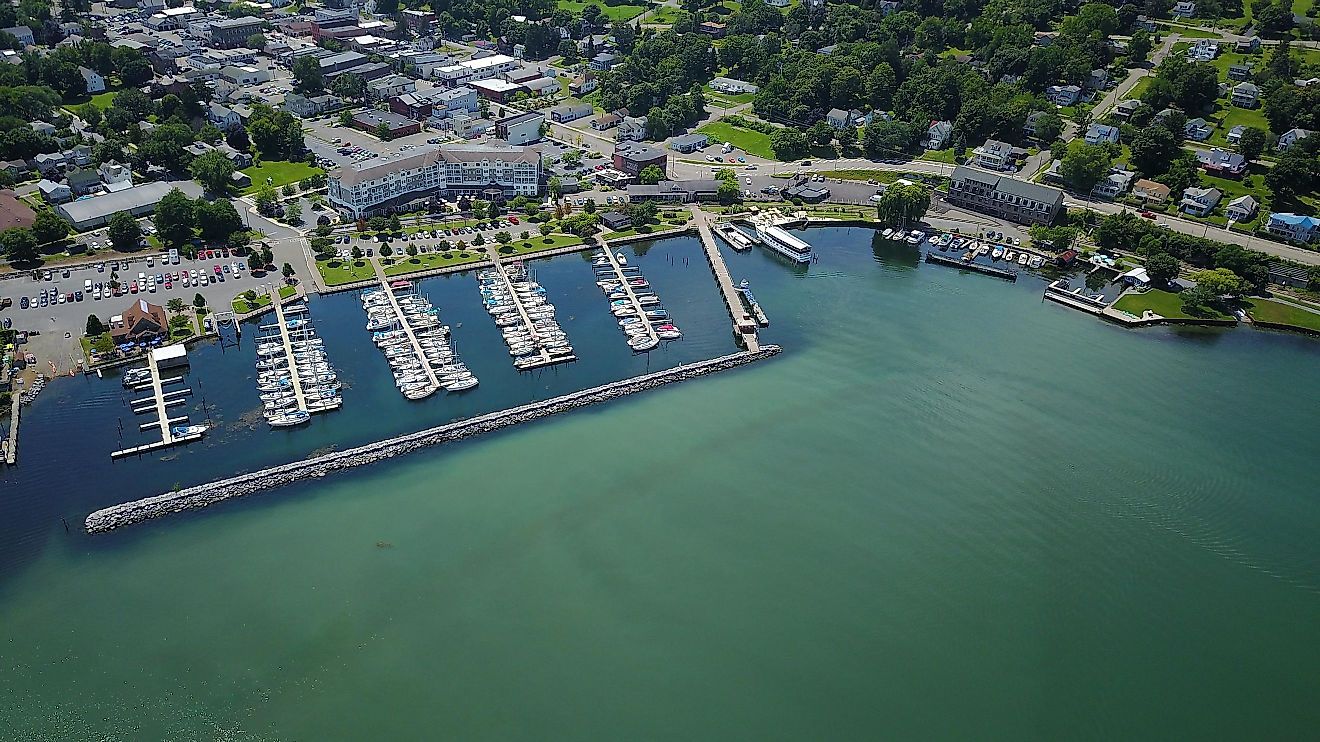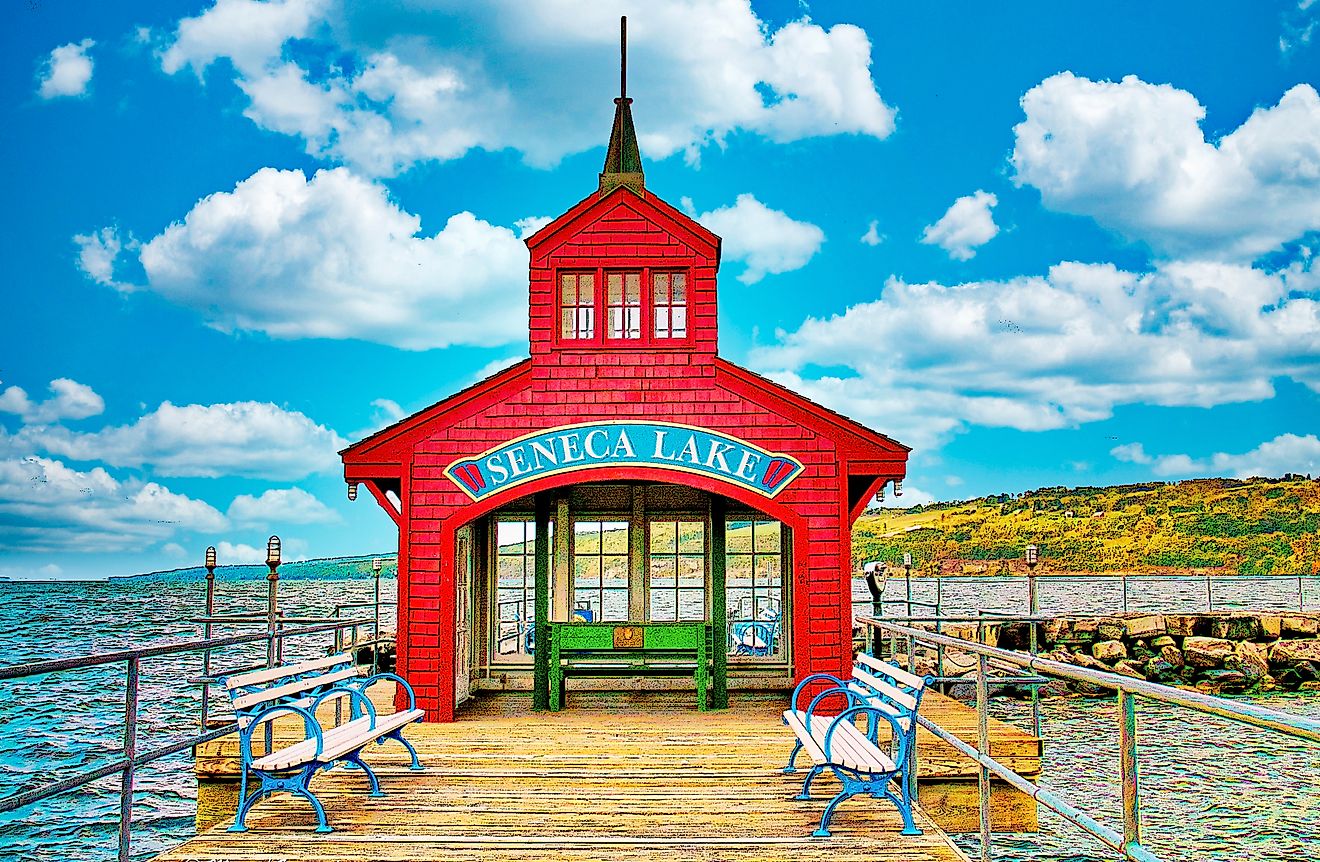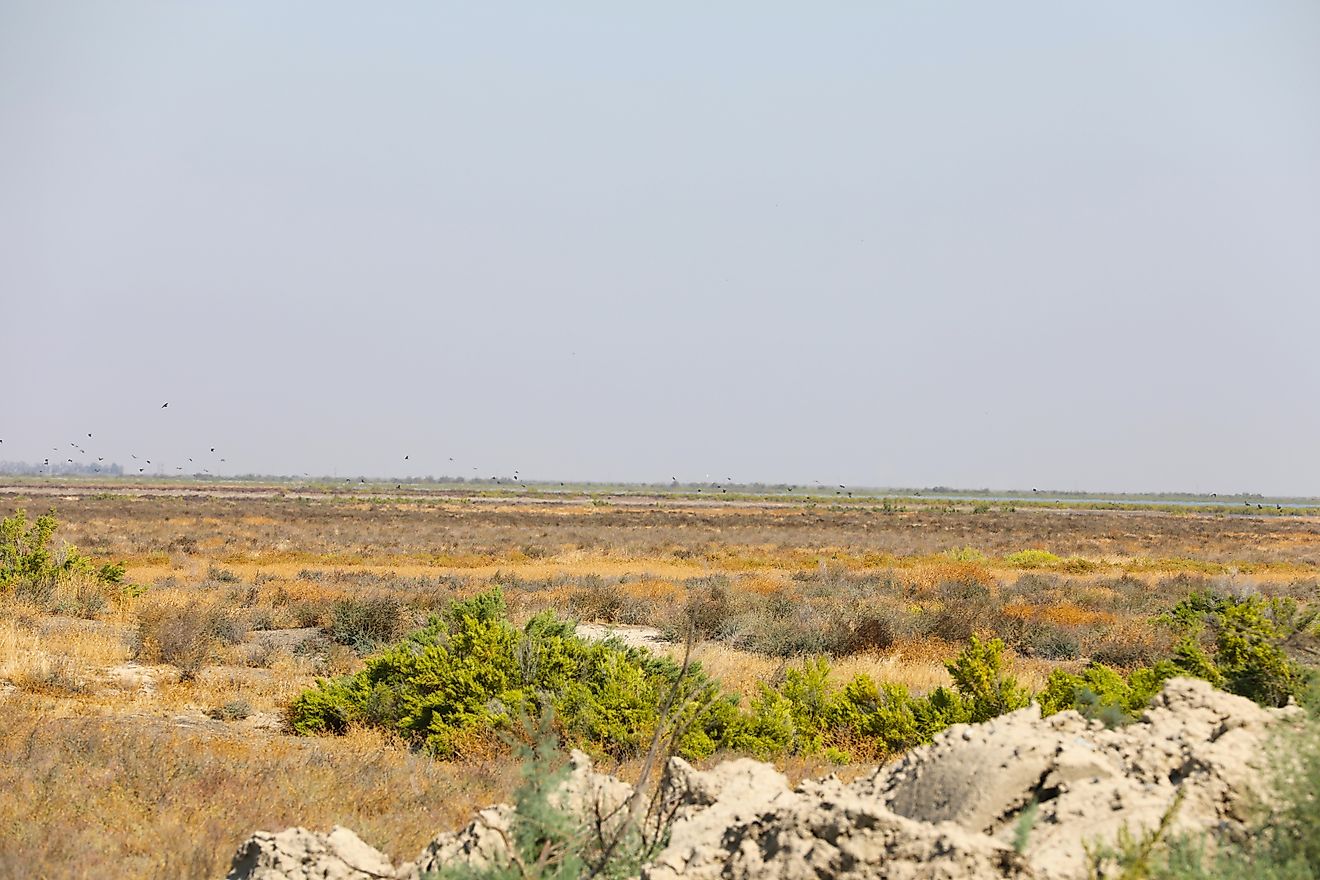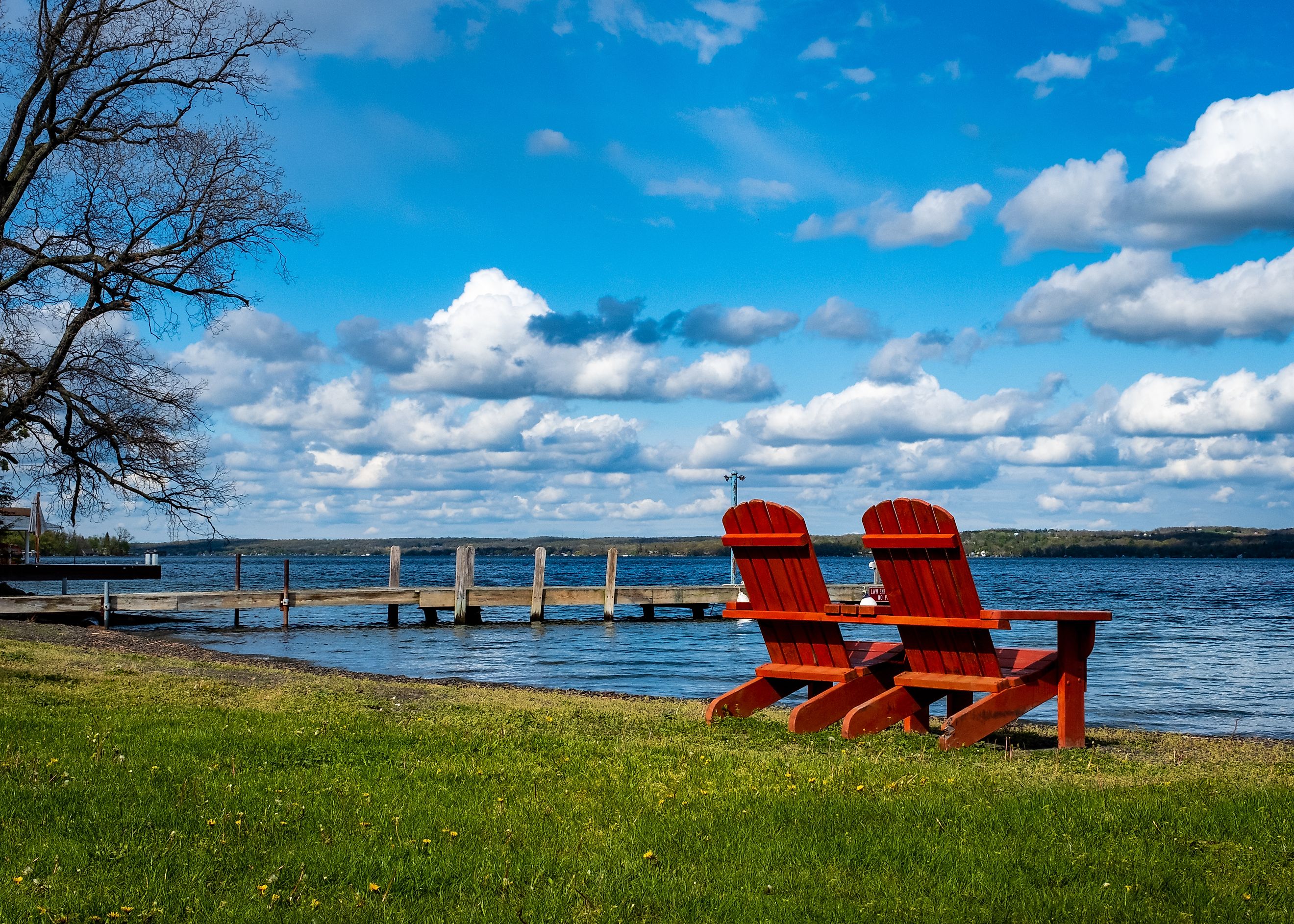
Canandaigua Lake
Stretching 15.5 miles through the heart of New York’s Finger Lakes region, Canandaigua Lake is a natural gem with a rich history, breathtaking landscapes, and a thriving ecosystem. As the fourth-largest Finger Lake and the westernmost of the major lakes in the region, Canandaigua is more than just a scenic retreat—it plays a vital role in the environment, economy, and culture of the area.
The lake’s name originates from the Seneca word tganǫdæ:gwęh, meaning “the chosen spot,” a testament to the significance of this body of water to the Haudenosaunee people who first inhabited the region. With crystal-clear waters that supply drinking water to thousands and an enduring legacy dating back to the 18th century, Canandaigua Lake is a destination where history and nature intertwine. Visitors flock to its shores for recreation, while conservationists work to preserve its delicate balance of flora and fauna.
From the historic signing of the Canandaigua Treaty in 1794 to its long-standing tradition of steamboat travel, this lake has been at the heart of regional development for centuries. Today, its shores are lined with a mix of private homes, state parks, and vineyards, making it a unique blend of untouched nature and human habitation. Whether kayaking to Skenoh Island, hiking through the High Tor Wildlife Management Area, or learning about the Ring of Fire tradition, there is no shortage of ways to explore Canandaigua Lake and its remarkable surroundings.
Geography and Landscape

Canandaigua Lake spans 15.5 miles in length and 1.5 miles in width, making it a prominent feature in Ontario and Yates counties. With a maximum depth of 276 feet and an average depth of 127 feet, the lake holds approximately 429 billion gallons of water, supporting a variety of aquatic life and serving as a crucial water source for surrounding communities.
Roughly 50% of the surrounding land is forested, while much of the remaining area is dedicated to agriculture. Vineyards and farmland extend from the shores, contributing to the Finger Lakes region’s reputation as one of New York’s premier wine-producing areas. The lake’s north shore is lined with summer cottages and luxurious homes, while its southern end, near Naples, offers access to the rugged beauty of High Tor Wildlife Management Area—a haven for hikers, birdwatchers, and outdoor enthusiasts.
The lake’s clarity is one of its defining features, with visibility reaching between 30 and 50 feet below the surface. This pristine water quality has earned Canandaigua Lake multiple awards, including recognition as the best drinking water in New York State in competitions held by the New York Section of the American Water Works Association in 2013 and 2017.
A Unique Geological and Historical Landmark

Located at the northern end of the lake, Skenoh Island (formerly known as Squaw Island) is the smallest Fish and Wildlife Management Area in New York State and one of only two islands in the entire Finger Lakes region. Rich in both geological and cultural significance, the island has been a focal point of conservation efforts due to its shrinking size—what was once two acres in 1853 has been reduced to a mere 55 by 145 feet due to erosion from wind, waves, and ice.
Skenoh Island is notable for its limestone oncolites, locally referred to as “water biscuits.” These rare carbonate formations result from algae filtering sand and pond scum, creating a fragile rock structure that crumbles when dry. Few places in the world exhibit this unique geological feature, making Skenoh Island a subject of scientific interest.
Beyond its geological significance, Skenoh Island holds a deep cultural history. During the Sullivan Expedition of 1779, the Seneca people reportedly used the island as a refuge for women and children. The island’s name change in October 2021, from Squaw Island to Skenoh Island, reflects a broader movement to remove derogatory terms from place names and honors the Seneca language—“Skenoh” translates to “health” or “peace.”
History and Cultural Traditions
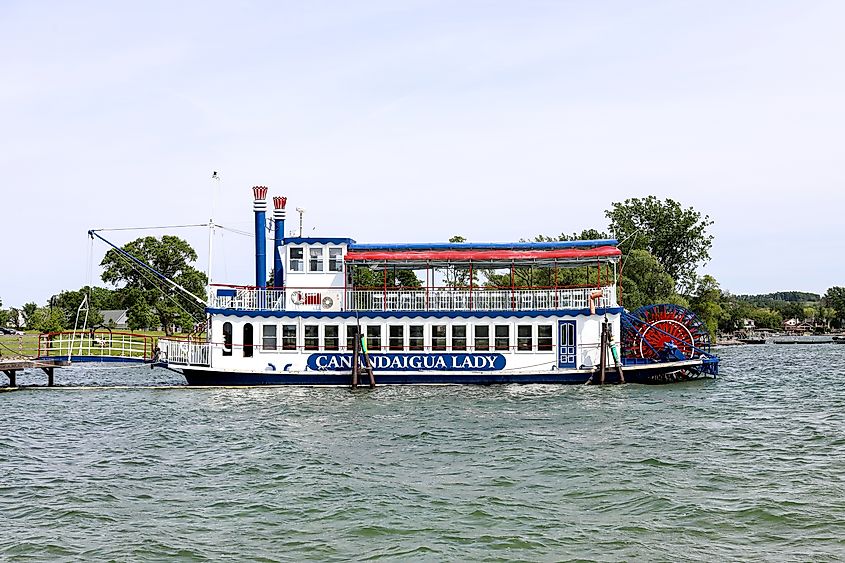
Canandaigua Lake’s history dates back centuries, beginning with the Haudenosaunee Confederacy, specifically the Seneca Nation, who considered the area a sacred homeland. The lake’s shores witnessed one of the most pivotal events in Native American and US relations—the signing of the Treaty of Canandaigua in 1794. Negotiated between the newly formed United States, represented by Colonel Timothy Pickering, and the Six Nations of the Iroquois, this treaty established a framework of peace and recognized Indigenous land rights. Today, the document remains an integral part of Native American history, commemorated annually by the Seneca and other Haudenosaunee peoples.
In the 19th and early 20th centuries, Canandaigua Lake was a hub of steamboat travel. The Enterprise, launched in 1825, was the first steamboat in the Finger Lakes region. Over time, 14 major passenger boats, including the Lady of the Lake and the Idler, transported people and goods across the water. Though commercial steamboat service ended in 1935, the tradition lives on through the Canandaigua Lady, a replica 19th-century paddleboat that offers cruises today.
One of the most cherished cultural traditions of Canandaigua Lake is the Ring of Fire, a celebration with roots in Seneca customs. The tradition began with the Seneca people burning tobacco around the lake’s edge to give thanks for the harvest. Today, this practice has evolved into an annual Labor Day weekend event, where residents light flares along the shoreline, creating a glowing ring that illuminates the entire lake—a breathtaking tribute to both past and present.
Flora and Fauna
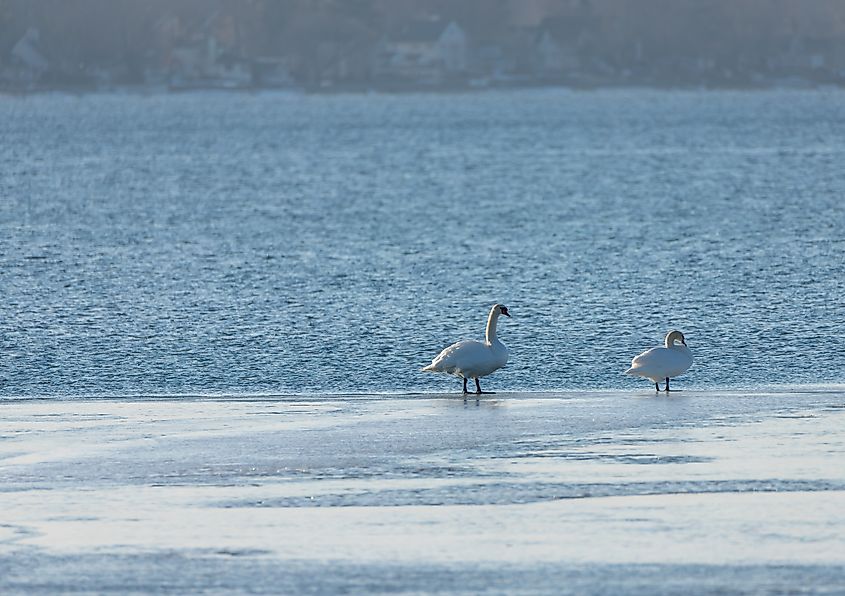
Canandaigua Lake supports a diverse range of plant and animal life, thriving in its well-oxygenated waters and surrounding landscapes. The lake is home to a variety of fish species, including lake trout, smallmouth bass, northern pike, and yellow perch, making it a popular destination for anglers. The clean water conditions allow fish to thrive in both shallow and deep environments, contributing to a sustainable aquatic ecosystem.
Birdwatchers visiting the area may spot bald eagles, great blue herons, and osprey, which nest in the dense forests surrounding the lake. The High Tor Wildlife Management Area, located at the southern end near Naples, serves as a critical habitat for migratory birds, white-tailed deer, and even black bears. The wetlands and wooded hillsides provide a refuge for countless species, ensuring the continued biodiversity of the Finger Lakes region.
The lake’s shores are adorned with a mix of deciduous and coniferous trees, including maple, oak, hemlock, and pine, which contribute to the picturesque autumn landscapes that draw visitors from across the country.
Recreation and Tourism
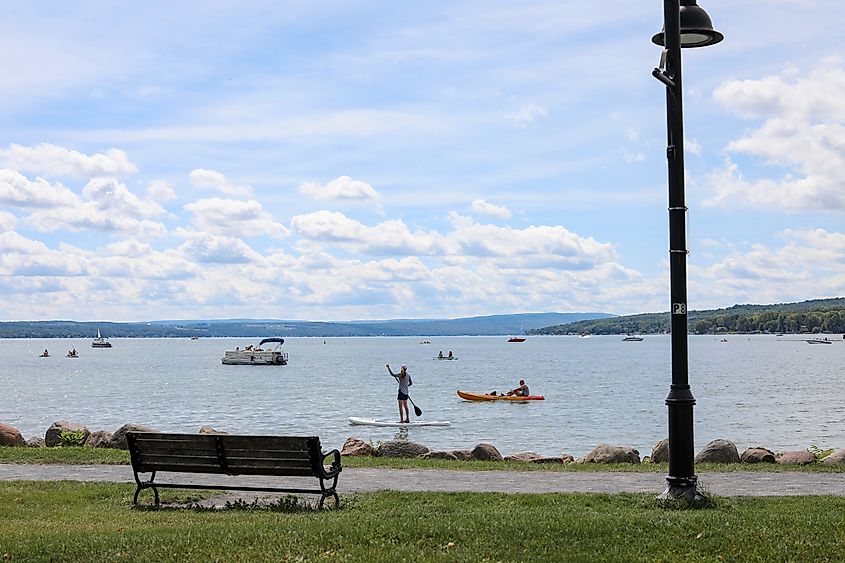
Canandaigua Lake’s blend of natural beauty and recreational opportunities makes it a popular destination for locals and tourists. The northern shore, near the city of Canandaigua, features Kershaw Park, a lakeside retreat with public swimming areas, picnic facilities, and scenic walking trails. Originally designed as a “swimming school” in 1906, the park remains a centerpiece of lakefront activities.
Further south, the village of Naples serves as a gateway to the region’s outdoor attractions. High Tor Wildlife Management Area offers extensive hiking trails, while the surrounding hills provide breathtaking views of the lake. The area is also known for its winemaking heritage, with several vineyards producing renowned Finger Lakes wines.
Visitors can rent kayaks, paddleboards, and boats to explore the lake’s tranquil waters, or take a cruise aboard the Canandaigua Lady for a historic sightseeing experience. For those interested in local history, the Ontario County Historical Society Museum provides in-depth exhibits about the area’s Indigenous and colonial past.
